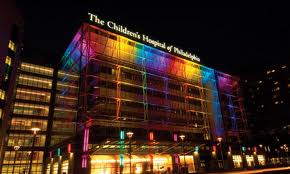 According to a release from the Children’s Hospital of Philadelphia, a new Autism study found significant differences in brain development starting at age 6 months in high-risk infants who later develop autism, compared to high-risk infants who did not develop autism. This new information may help doctors detect Autism in children much sooner, by using biological markers, than through behavioral observation. The study also may help in developing more effective treatments.
According to a release from the Children’s Hospital of Philadelphia, a new Autism study found significant differences in brain development starting at age 6 months in high-risk infants who later develop autism, compared to high-risk infants who did not develop autism. This new information may help doctors detect Autism in children much sooner, by using biological markers, than through behavioral observation. The study also may help in developing more effective treatments.
The study, led by Dr. Paterson and Robert Schultz, PhD, was based on research from the Infant Brain Imaging Network, which includes researchers at the Center for Autism Research at The Children’s Hospital of Philadelphia (CHOP). Published in the February 17th edition of the American Journal of Psychiatry, the results are the latest from the ongoing Infant Brain Imaging Study (IBIS).
“It’s a tremendously exciting finding,” said Sarah Paterson, PhD, director of the Infant Neuroimaging Lab at CHOP’s Center for Autism Research. “We found that the brains of the children who developed autism were markedly different even prior to the onset of behavioral symptoms of autism. Thus, our findings, while requiring replication, are a very important first step towards identifying a biomarker for autism risk. This would enable specialists to diagnose autism much earlier than what is currently possible through behavioral observations.”
According to the study, researchers have found that autism actually develops over time during infancy. By identifying the markers early on and then applying what they refer to as “intensive early intervention,” the outcomes in children with developmental delays and autism appear to be improved.
“This research raises the possibility that we might be able to intervene even before a child is 6 months old, to blunt or prevent the development of some autism symptoms,” said Paterson.
A similar study, conducted in London published in Current Biology, found that infants at high risk for autism who were later diagnosed with the condition showed different brain responses from low-risk babies, or from high-risk babies that did not develop autism when shown images of faces looking at or away from the baby. According to Paterson, the findings at CHOP lends credence to the London research and is encouraging evidence that scientists are on the right track towards finding markers for identifying autism much earlier than is currently possible.
Other institutions which participated in the research for the study, in addition to CHOP, included The University of North Carolina, University of Utah, Washington University in St. Louis, University of Washington, McGill University, and the University of Alberta.
![Herbal Reference Substances are Key to Everyday Products <!-- AddThis Sharing Buttons above -->
<div class="addthis_toolbox addthis_default_style " addthis:url='http://newstaar.com/herbal-reference-substances-are-key-to-everyday-products/3512112/' >
<a class="addthis_button_facebook_like" fb:like:layout="button_count"></a>
<a class="addthis_button_tweet"></a>
<a class="addthis_button_pinterest_pinit"></a>
<a class="addthis_counter addthis_pill_style"></a>
</div>When it comes to quality control testing and the development of new products, Botanical Reference Materials (BRMs), also known as Herbal References are critically important. To help companies ultimately obtain all-important FDA approval, the Food and Drug Administration provides in its guidance a recommendation that […]<!-- AddThis Sharing Buttons below -->
<div class="addthis_toolbox addthis_default_style addthis_32x32_style" addthis:url='http://newstaar.com/herbal-reference-substances-are-key-to-everyday-products/3512112/' >
<a class="addthis_button_preferred_1"></a>
<a class="addthis_button_preferred_2"></a>
<a class="addthis_button_preferred_3"></a>
<a class="addthis_button_preferred_4"></a>
<a class="addthis_button_compact"></a>
<a class="addthis_counter addthis_bubble_style"></a>
</div>](http://newstaar.com/wp-content/uploads/2021/02/Achillea_millefolium_flowers-100x100.jpg)
![Quality Electrochemical Biosensors are Critical for Medical, Food and Chemical Industry <!-- AddThis Sharing Buttons above -->
<div class="addthis_toolbox addthis_default_style " addthis:url='http://newstaar.com/quality-electrochemical-biosensors-are-critical-for-medical-food-and-chemical-industry/3512086/' >
<a class="addthis_button_facebook_like" fb:like:layout="button_count"></a>
<a class="addthis_button_tweet"></a>
<a class="addthis_button_pinterest_pinit"></a>
<a class="addthis_counter addthis_pill_style"></a>
</div>A number of industries have, at their core, a need to frequent or even continuous analysis of biological media. These include the medical and pharmaceutical fields, biotech firms, and food and chemical companies. To maintain quality standards and develop new products, these industries rely heavily […]<!-- AddThis Sharing Buttons below -->
<div class="addthis_toolbox addthis_default_style addthis_32x32_style" addthis:url='http://newstaar.com/quality-electrochemical-biosensors-are-critical-for-medical-food-and-chemical-industry/3512086/' >
<a class="addthis_button_preferred_1"></a>
<a class="addthis_button_preferred_2"></a>
<a class="addthis_button_preferred_3"></a>
<a class="addthis_button_preferred_4"></a>
<a class="addthis_button_compact"></a>
<a class="addthis_counter addthis_bubble_style"></a>
</div>](http://newstaar.com/wp-content/uploads/2020/10/Electrochemical-Biosensor-100x100.jpg)
![Company Develops Industrial Mixers Well-Suited for both Fragile and Explosive Products <!-- AddThis Sharing Buttons above -->
<div class="addthis_toolbox addthis_default_style " addthis:url='http://newstaar.com/company-develops-industrial-mixers-well-suited-for-both-fragile-and-explosive-products/3512071/' >
<a class="addthis_button_facebook_like" fb:like:layout="button_count"></a>
<a class="addthis_button_tweet"></a>
<a class="addthis_button_pinterest_pinit"></a>
<a class="addthis_counter addthis_pill_style"></a>
</div>Industrial drum mixers are normally applied to blend mixes of varying viscosities such as adhesive slurries or cement. Some of these mixers have the capability of blending mixes of very different particle sizes such as fruit and ice cream, and gravel and cement slurry. The […]<!-- AddThis Sharing Buttons below -->
<div class="addthis_toolbox addthis_default_style addthis_32x32_style" addthis:url='http://newstaar.com/company-develops-industrial-mixers-well-suited-for-both-fragile-and-explosive-products/3512071/' >
<a class="addthis_button_preferred_1"></a>
<a class="addthis_button_preferred_2"></a>
<a class="addthis_button_preferred_3"></a>
<a class="addthis_button_preferred_4"></a>
<a class="addthis_button_compact"></a>
<a class="addthis_counter addthis_bubble_style"></a>
</div>](http://newstaar.com/wp-content/uploads/2020/06/bandeau-sofragir2-100x100.jpg)